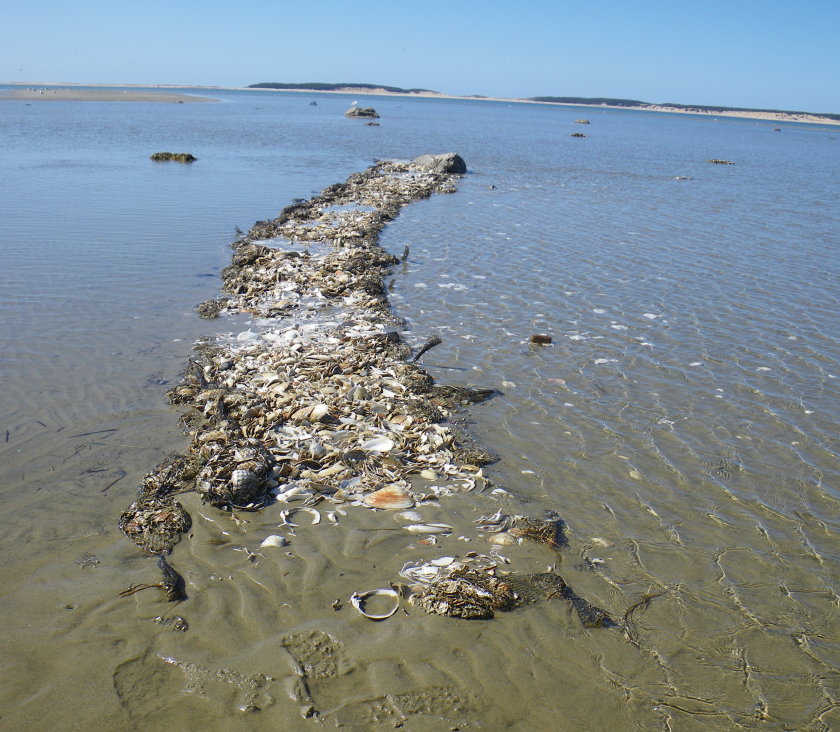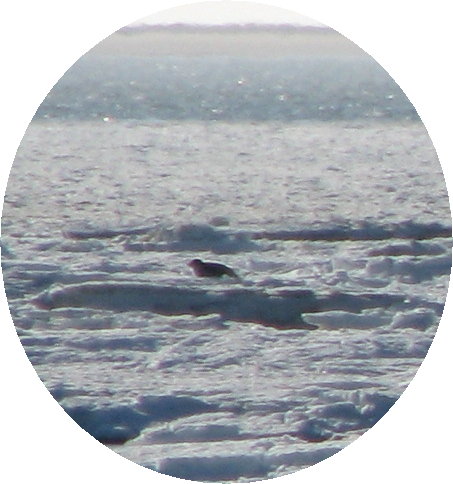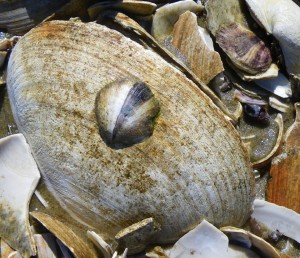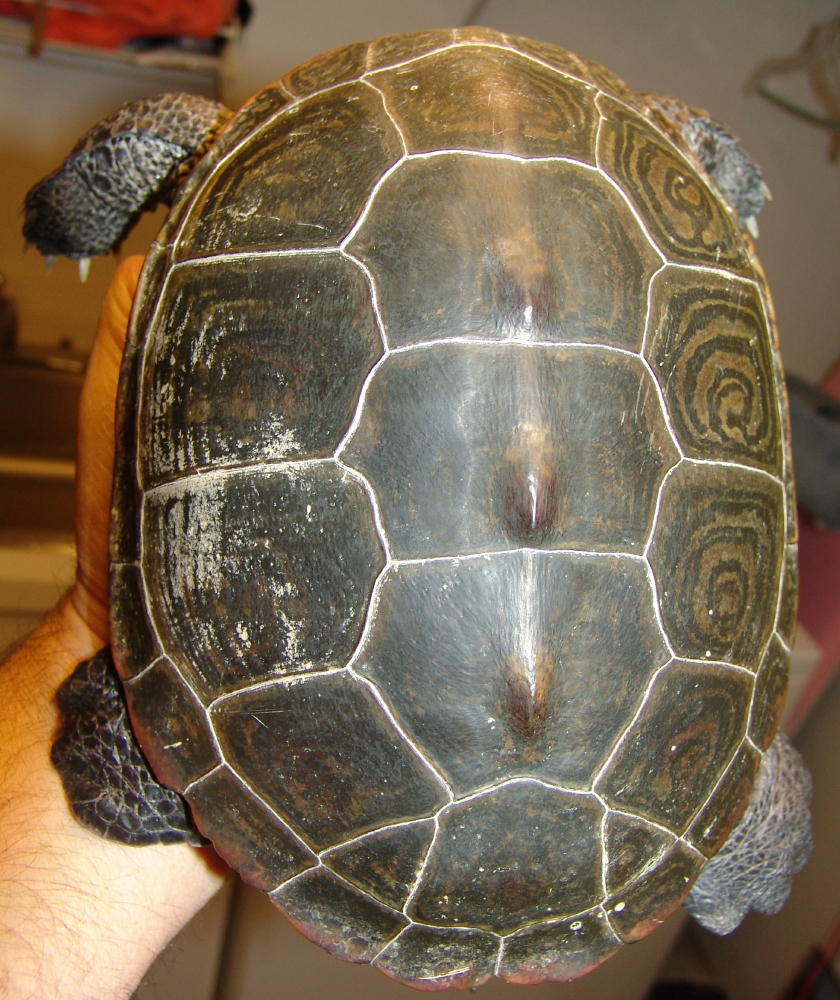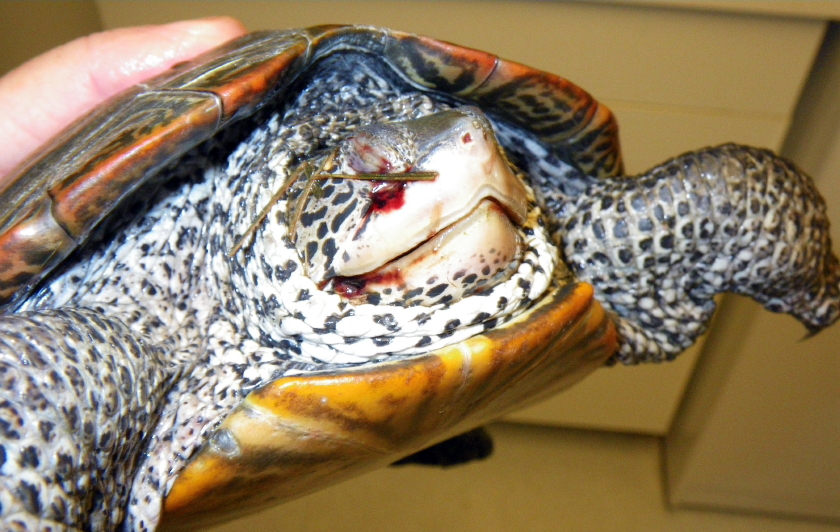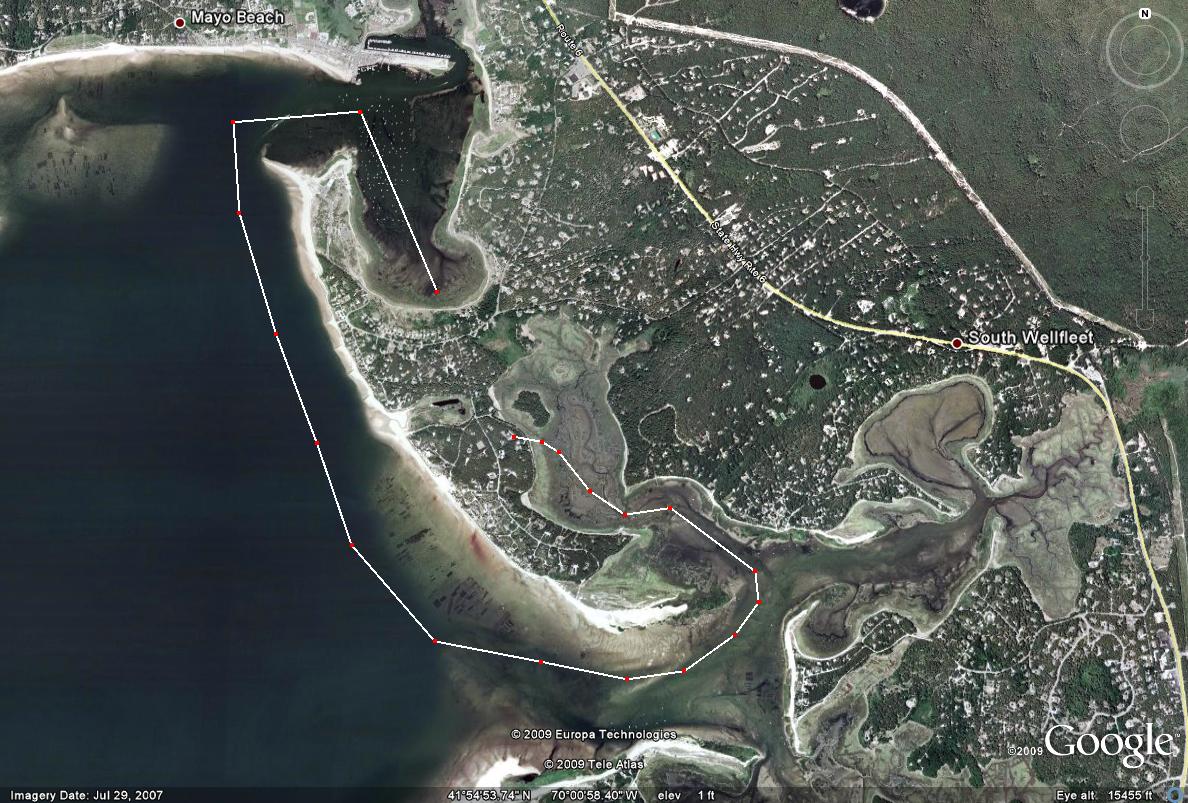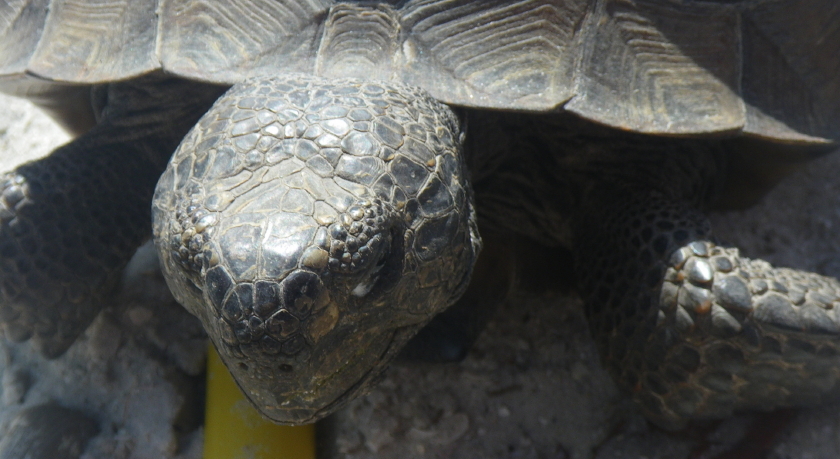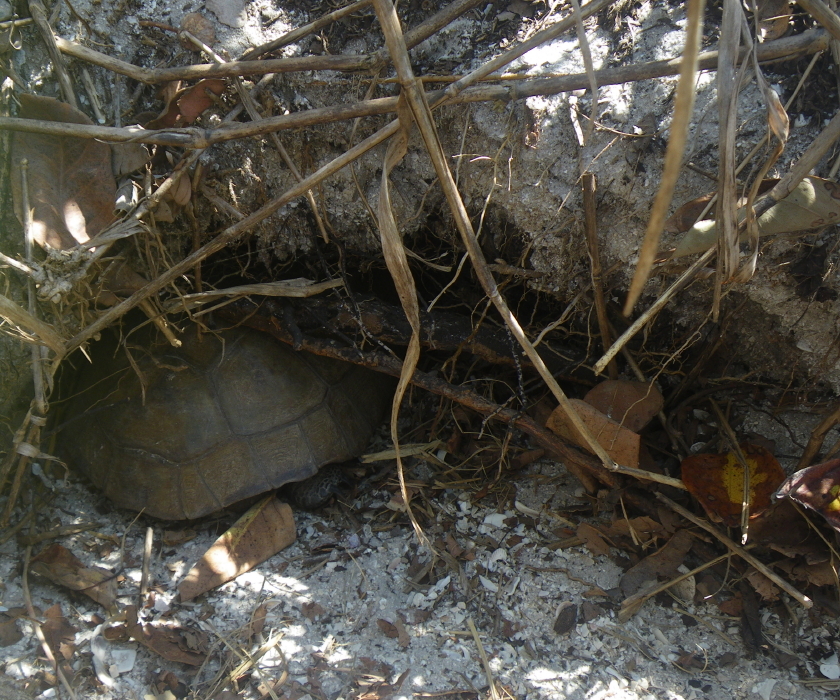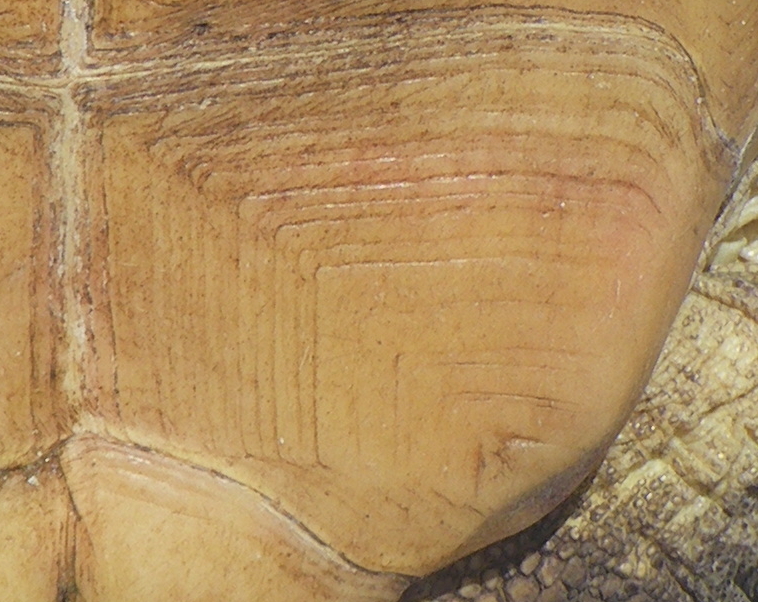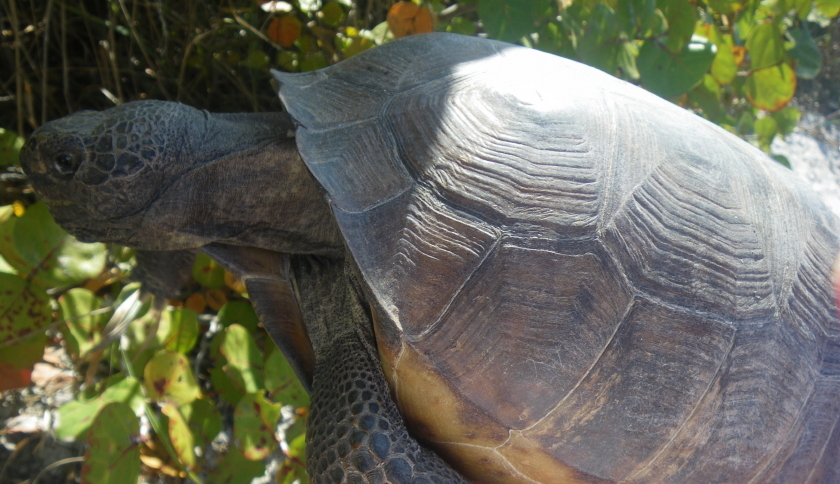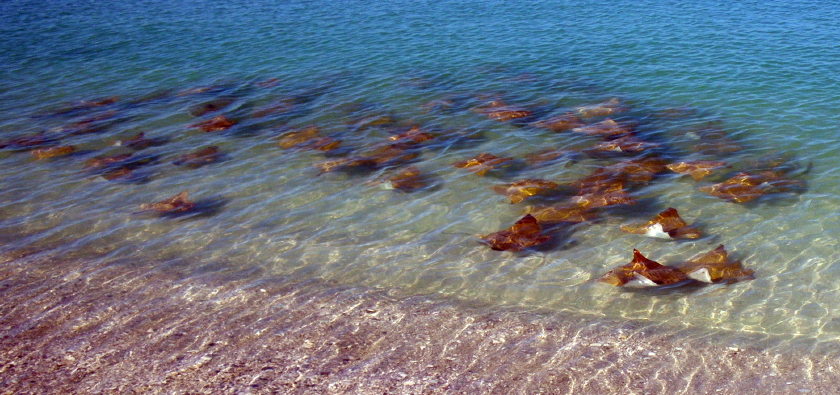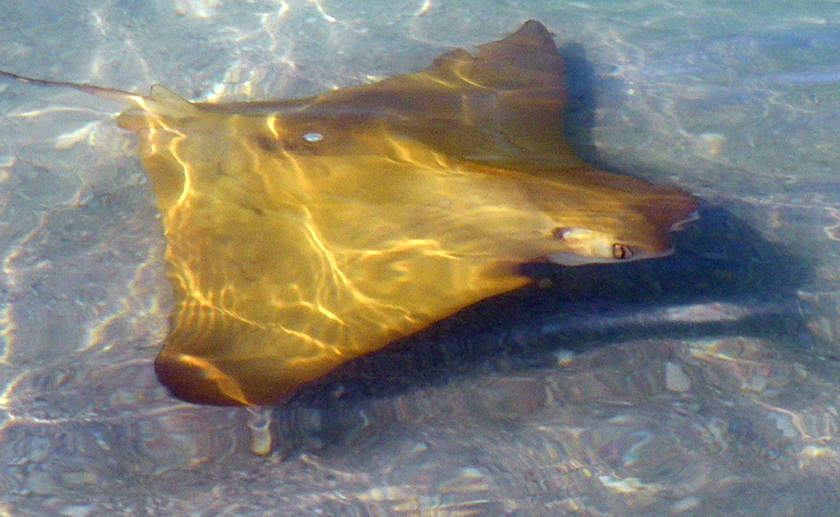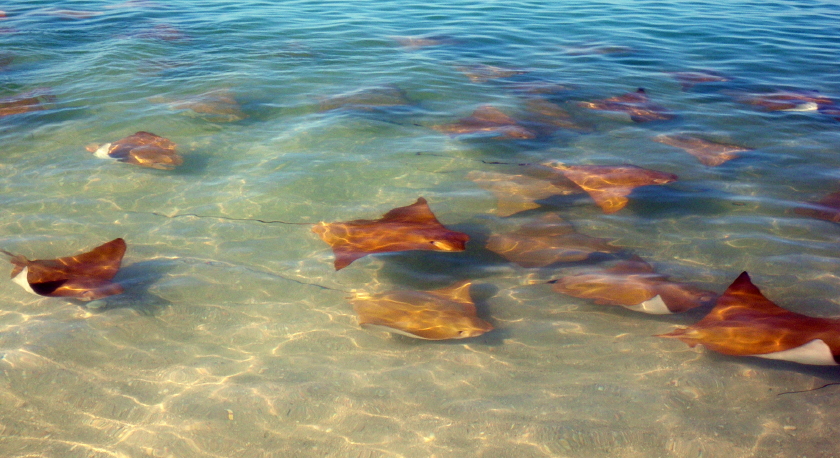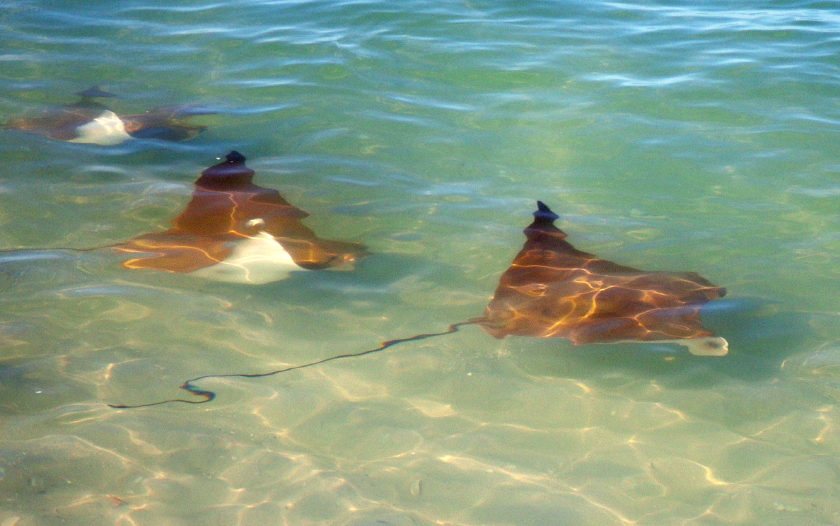Oyster Reef off Lieutenant Island Survives Long, Harsh Winter
Turtle Journal returned to the oyster reef restoration project off Lieutenant Island in Wellfleet Bay a few days before the Vernal Equinox. This project is spearheaded by Mass Audubon‘s Wellfleet Bay Wildlife Sanctuary under the leadership of its director, Bob Prescott, in collaboration with federal, state and town partners. While oyster reefs formed a key element of Wellfleet’s historic natural coastal ecosystem as documented by early European explorers, this critical habitat had been eliminated from Wellfleet Bay in modern times. Experimenting with methods to recreate oyster reefs within the Outer Cape ecosystem will offer coastal communities options to restore a key underpinning to their traditional harbor and estuarine ecologies.
Our Turtle Journal assessment: the rudimentary reef structure emplaced  last August survived an extremely challenging winter quite well.
Flashback to Fall 2008
Click Here to View Video in High Quality
Flashback:Â Oyster Reef in Early Fall 2008
Last September Turtle Journal cameras probed underwater to capture the experimental reef after its first couple of months. These images provide a good baseline against which to judge its current condition.
In a September 23rd, 2008Â posting on the Wellfleet Bay Natural History Blog, Bob Prescott explains why’s and wherefore’s of oyster reef restoration.
“Why oyster restoration? It’s not just because they taste great and are increasingly rare in the wild.
Oyster reefs–that’s what a mass of oysters growing together is called. It is a huge complex structure that is home to many, many species of marine invertebrates and fish, both adults as a feeding area and juveniles to hide in. That habitat is almost completely gone from Wellfleet Harbor.
The ecological services that a reef provides are missing from the harbor ecosystem. Oysters help keep the water clean by pumping 60 gallons of water over their gills every day. Also, they lock up nitrates that are overwhelming the coastal system’s ability to absorb.
We talk about conservation and restoration, right down to the waters edge, but what about all those habitats that we have lost because we overfished them? When an oyster reef is overfished, the shell, the structure itself ceases to exist. No more habitat.
For me, it is about protecting all the habitats that make up this sanctuary and restoring those that are missing or in decline. The oyster reef is one example of a key coastal habitat that needs our help.
In August we began the construction of the new reef near Lieutenant Island in Wellfleet Bay.”
A later blog entry on November 1st, 2008 explained “How To Build An Oyster Reef.”
Flashback to Winter 2008/2009
Click Here to View Video in High Quality
Wellfleet Bay Ice Bound, Winter 2008/2009
The winter of 2008/2009 proved quite long and harsh for the Great White North. Record snow pelted Cape Cod and ice floes clogged Wellfleet Bay, completely enveloping the new oyster reef. As brief thaws set in, massive ice sheets weighing in the tons were dragged across the reef like ploughs. Bright yellow marker buoys from last summer were torn from their moorings, and we feared that the reef itself might have been ripped apart.
Ice Covered Oyster Reef in February
(Courtesy of Wellfleet Bay Wildlife Sanctuary)
Bob Prescott and his team documented ice cover over the oyster reef in early February. If you look closely at the top left of the ice pack, you may spot a juvenile seal basking in the winter sun (see close-up below).
Close-Up of Seal on Ice Pack off Lieutenant Island
(Courtesy of Wellfleet Bay Wildlife Sanctuary)
Back to the Present
On Saint Patrick’s Day, the Turtle Journal team waded out to the oyster reef at low tide. As seen in the image at the top of this post, the reef structure survived the long, harsh winter quite well. When Don reached the reef, he frightened away a chubby seagull that had been plucking young, juicy shellfish from the substrate and slurping down their contents.Â
Young Oysters Survive Harsh Winter on Oyster Reef
The surf clam substrate still holds a nice set of spat and young oysters. Bob’s crack team of oyster researchers will visit the reef shortly to conduct a scientific assessment of the density of shellfish to compare against the data they documented in the fall. They will also begin installing various additional substrates to determine the best structure on which oysters might best accumulate into a viable, self-sustaining reef within the harsh conditions of the Outer Cape.
Click Here to View Video in High Quality
Life Returns to the Oyster Reef
The water is still pretty cold in the inter-tidal zone off Lieutenant Island. So, life is returning slowly as the sun climbs higher into the sky each day. Periwinkles and mud snails are moving about now, and pesky, invasive Asian shores crabs have been active all winter under rock fields in front of the western seawall. But we were lucky this day to discover a lonely hermit crab strolling along the edge of the reef as an early sign of spring. Only yesterday, March 24th, snow flurries driven by a fierce northeast gale assaulted the Outer Cape. In the Great White North, spring comes slow and hard, and must fight its way onto the calendar.
For more detailed information on oyster reef restoration, you may follow the project on the Wellfleet Bay Natural History Blog.
